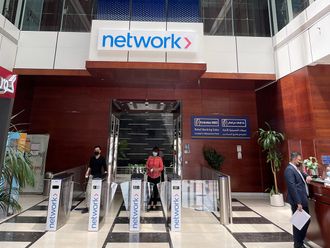Dubai: The world has experienced a series of market traumas since the financial meltdown of 2008 — over the past year or two, there has been a slowdown in China, crises in Greece, a collapse in oil prices and uncertainties resulting from Brexit.
The global growth outlook appears to be clouded — but before pressing the panic button, let us take a calm view of whether the global economy and banking systems have really been pushed to their limits.
Range of challenges
Certainly, the UAE has been affected by plummeting oil prices, resulting in a drop in hydrocarbon exports and revenues. Fiscal and external balances are weakening, macro-financial risks are increasing and liquidity in the banking system is tight. The latest Mena Economic Monitor Report-Spring 2016 forecasts the UAE will recover slowly, averaging 2.5 per cent between 2016 and 2018, as a result of low oil prices. This compares with sustained growth levels of over 6 per cent per year in recent decades.
Financial report cards in the first half indicate stress on banking sector revenues, financing growth, profitability and asset quality. Fiscal consolidation and a squeeze on deposits, particularly from the public sector, have also impacted banking sector liquidity. Additionally, the overall credit growth for the year is expected to remain slow in the context of lower demand from the private sector and the ongoing deleveraging from the small and medium enterprises (SME) sector. It is also true that bank sector earnings are likely to go through a phase of weak growth.
The question is, have we entered a cycle in which tighter liquidity and a slowing business environment is limiting profitability and credit growth in the banking sector?
Positive outlook
If we leave aside the discouraging statistics, and concentrate on how this affects daily earnings, the UAE’s economy has fared relatively well this year due to timely policy interventions by the government and the banks.
The International Monetary Fund, in its review of the economy in July, appreciated the state’s fiscal strategy and steps taken to address the budget shortfall. The IMF sees non-oil sector growth being boosted as the implementation of infrastructure projects ramps up ahead of Expo 2020, and with the lifting of trade and commerce sanctions on Iran. In Dubai, where state agencies are vigorously pushing tourism and real estate projects, the IMF expects growth to accelerate marginally, to 3.7 per cent from 3.6 per cent.
The non-oil private sector has also seen a higher output, thanks to strong diversification in the economy. This has been accompanied by growth in new jobs, with the pace of hiring, in July, quickening to a 14-month high. The property sector, too, is holding up well, with the IMF noting that falling prices do not pose systemic risks for the financial sector.
Multi-prongedstrategy
The UAE government and banking authorities, however, are leaving nothing to chance and are working overtime to keep the economy on track. A combination of tax and tightening measures, finance restructuring for small businesses and market friendly products for investors are also helping boost sentiment and bottom-lines. To improve fiscal balance, the UAE will implement a value added tax (VAT) regime, by 2018, along with other GCC countries. It is also reportedly considering the introduction of a corporate tax.
Small businesses have been hit by the economic slowdown, made worse for some exporting companies by a strong US dollar, to which the UAE dirham is pegged. The SME sector consists of about 300,000 companies, accounting for 86 per cent of the UAE’s private sector workforce, according to the Ministry of Economy.
In order to help businesses against financial constraints, the UAE Banking Federation (UBF) unveiled a plan to help struggling SMEs. Bank officials can now work together with indebted companies, helping them restructure their financing, so that businesses can stay operational, even as they pay their dues to the banks. This has already begun to reap benefits, with various SME owners contacting banks in the region, in an effort to return to their respective businesses in the UAE.
The debt-repayment mechanism introduced by the UBF will be further strengthened when the new insolvency law is given the green light by the Federal National Council. Under the scheme by the UBF, companies can escape criminal charges for bouncing cheques while undergoing an administration process.
Core market
Another long-term solution involves a market strategy under which Islamic finance products are mainstreamed. The decision of the UAE Cabinet to approve the launch of the new Sharia Authority will provide a unified, national regulator for the country and ensure the standardisation of Islamic finance products.
The UAE is one of the world’s core markets for Islamic Financial Services (IFS), and it has made significant contributions to both global industry asset growth and innovation. This is further emphasised when you look at Dubai’s position at the top of Sukuk listings globally. This year for example, despite a challenging environment, Noor Bank listed a $500 million (Dh1.8 billion) debut tier 1 Sukuk on Nasdaq. It became the 11th Sukuk listing in Dubai in 2016, pushing the nominal value of listings in Dubai to an impressive $44.56 billion, at the time.
Taking into account the relative robustness of the economy, the measures taken to enhance the financial sector and the support being given by the government to SMEs, we can be confident, the UAE continues to chart a healthy economic course.
The writer is the CEO of Noor Bank.









